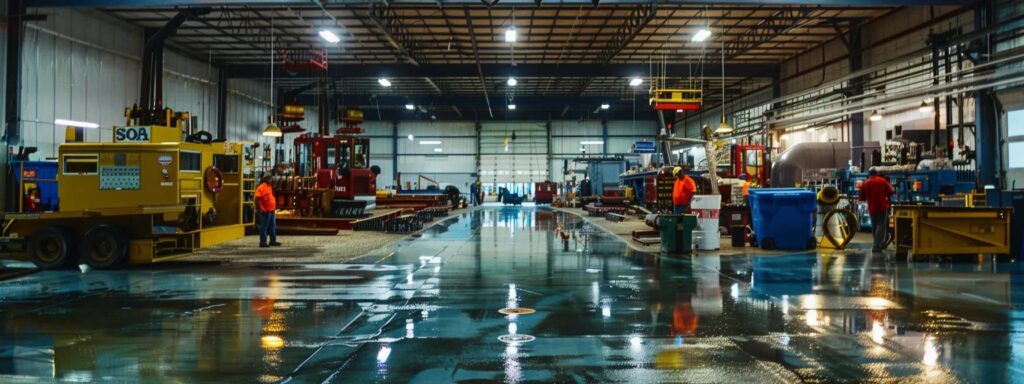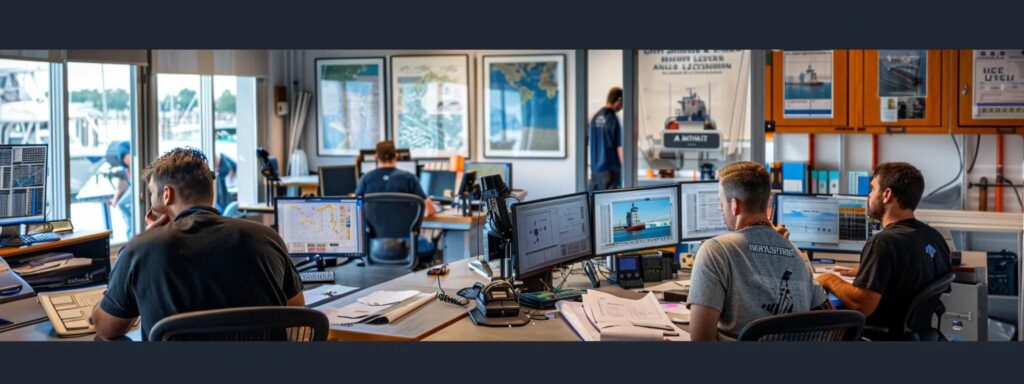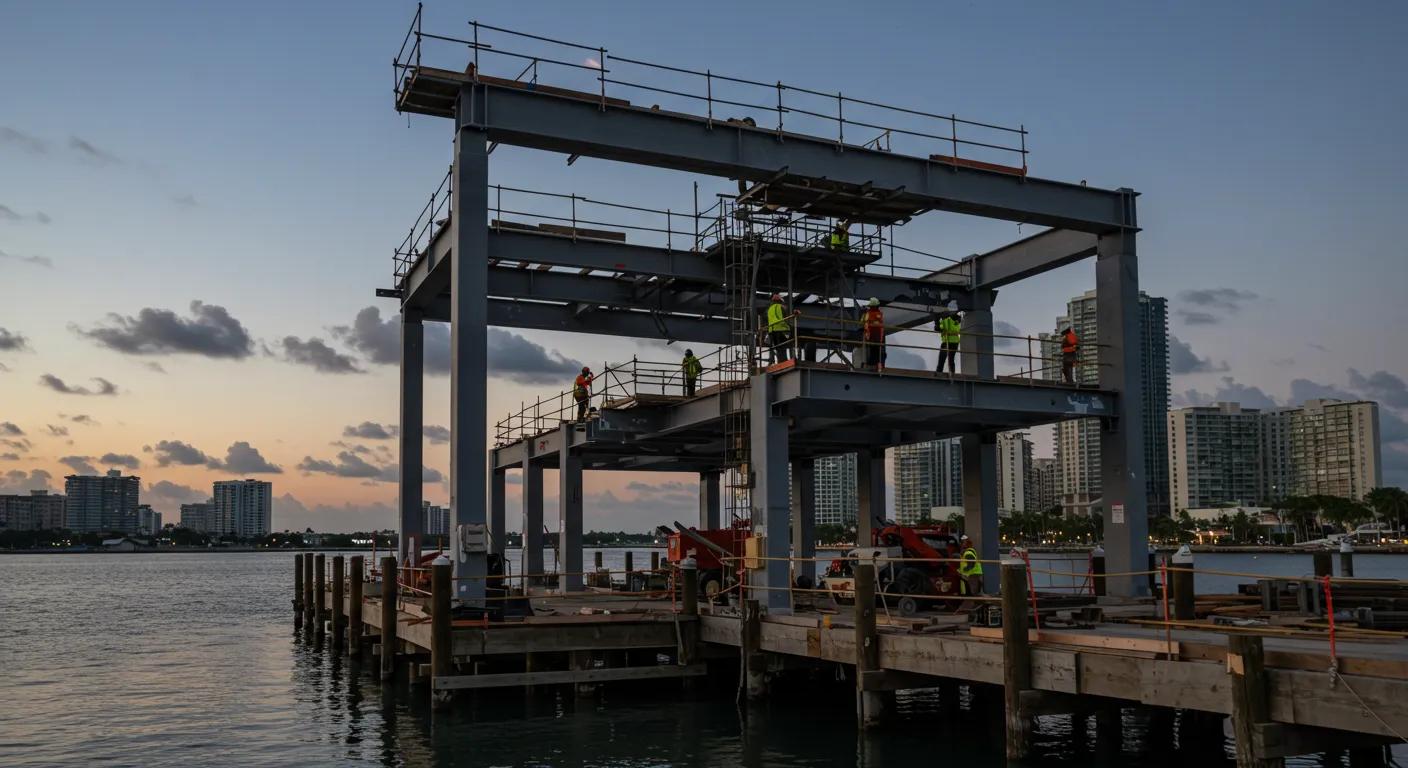How Anticipating Dock Maintenance Costs Affects Your Overall Construction Investment Strategy
Investing in waterfront infrastructure such as docks is a complex decision that impacts immediate construction expenses as well as long-term productivity, longevity, and return on investment. When constructing a dock with materials like steel, concrete, or composite materials, it is crucial to consider not only the initial build but also recurring maintenance costs. Understanding how these expenses impact your investment strategy helps optimize operational efficiency, ensure regulatory compliance, and reduce risks from wear and tear, corrosion, and environmental damage. This guide explores the relationship between dock costs and investment strategies, key factors driving maintenance expenses, long-term financial implications, and innovative solutions to minimize dock maintenance costs. By reviewing examples and lessons learned, you can develop a proactive plan that transforms potential liabilities into long-term assets.
Understanding the Relationship Between Dock Costs and Investment Strategies
How does anticipating dock maintenance expenses affect your overall investment planning? The first step is understanding how regular inspections, repairs, and upgrades impact both initial construction and long-term capital commitment. Maintenance costs vary with factors such as environmental exposure, material quality, usage frequency, and regulatory requirements. Early analysis of these expenses enables you to build a strategy aligned with both short-term budgets and long-term asset management goals.
Analyze How Dock Maintenance Expenses Influence Investment Decisions Every dollar spent on maintenance reduces available capital for innovation or expansion. Regular inspections for corrosion, structural degradation of dock bumpers and mooring systems, and periodic repairs are predictable costs that, when managed well, lower downtime and extend the dock’s lifespan. Allocating funds for preventative maintenance instead of reactive repairs improves efficiency and reduces the risk of costly failures, protecting asset value over time.
Identify Key Factors Affecting Dock Maintenance Costs Key factors include the materials used, exposure to harsh elements like saltwater and UV radiation, and usage by cargo or recreational vessels. Regulatory compliance with safety and environmental standards may add further costs if not pre-planned. Other aspects such as design complexity, integrated safety features, and available monitoring technologies also affect long-term expenditures. Recognizing these factors lets you choose high-durability materials and establish effective maintenance schedules.
Evaluate Investment Strategies That Align With Dock Upkeep It is crucial to assess whether your current maintenance planning meets your capital expenditure and risk management objectives. While lower-cost materials may reduce upfront expenses, they often lead to higher repair costs. Aligning investment strategies with predictive analytics and proactive maintenance protocols maximizes operational efficiency, maintains safety, and meets long-term performance objectives. Strategies might include setting aside reserve funds and using technology to detect emerging issues before they become severe.
Key Factors Driving Dock Maintenance Costs in Investment Plans

Investigate Types of Maintenance Services and Their Costs Dock maintenance services generally include routine inspections, scheduled preventative work, emergency repairs, and major refurbishments. Routine inspections, performed quarterly or annually, aim to detect early signs of corrosion or structural fatigue. Preventative maintenance may involve repainting, replacing worn dock bumpers, or applying corrosion-resistant coatings. Emergency repairs, typically triggered by severe weather or accidental damage, can be costly. For example, an annual preventative maintenance program costing 3–5% of the dock’s construction cost can extend the asset’s life and stabilize return on investment over time.
Review Seasonal Factors Impacting Dock Maintenance Expenses Seasonal variations significantly influence maintenance needs. In coastal environments, winter storms and freezing conditions accelerate wear through freeze–thaw cycles, while summer heat intensifies material degradation. Regional weather patterns, including monsoon rains or high humidity, may demand more frequent inspections and faster repairs. Tailoring maintenance schedules to seasonal trends helps allocate budgets efficiently and reduces the risk of unexpected financial strain.
Consider the Role of Regulatory Compliance in Maintenance Costs Local, state, and federal regulations often require specific maintenance standards and periodic safety inspections. Compliance can necessitate additional documentation, third-party evaluations, and costly upgrades. Ignoring these mandates risks fines, legal issues, and even catastrophic failure. Regular compliance audits help manage maintenance costs while ensuring safety and adherence to evolving standards, contributing to a predictable total cost of ownership.
Assessing Long-Term Financial Implications of Dock Investments
Project Future Costs for Dock Maintenance Over Time Successful planning involves forecasting long-term maintenance expenses using historical data and predictive modeling. Tools that account for material degradation, usage frequency, environmental impact, and inflation help create a realistic projection of future costs. A detailed maintenance timeline outlining repairs, refurbishments, and eventual replacements supports proper reserve fund planning and facilitates better contract negotiations with service providers.
Establish ROI Expectations for Dock-Related Investments Return on investment is determined by weighing initial construction costs against long-term maintenance expenses. Regular, preventative upkeep extends the dock’s life and improves functionality, enhancing asset value. Comparing scenarios where maintenance is proactive versus reactive shows that investing in consistent upkeep reduces overall costs and increases performance. Financial models that incorporate maintenance schedules, material longevity, and efficiency upgrades—such as using composite materials—clarify the ROI balance.
Analyze Market Trends in Dock Construction and Maintenance Staying informed on market trends is essential. The increased adoption of composite decking, smart sensors for maintenance, and sustainable practices all serve to lower long-term costs. Labor and material price trends, as well as changes in maritime regulations, provide indicators for future expense growth. By monitoring industry reports and consulting marine construction experts, you can adjust your investment strategy to align with emerging market trends and enhance durability while maintaining a competitive edge.
Developing a Balanced Investment Strategy for Dock Maintenance

Craft a Budget That Accommodates Dock Maintenance Needs Developing a realistic maintenance budget begins with a careful estimation of construction and ongoing maintenance expenses. Allocating a fixed percentage of your overall budget for preventative repairs, periodic inspections, and emergency expenses minimizes surprises. A detailed cost breakdown—including labor, materials, and compliance fees—helps plan for upgrades and extends the dock’s lifespan by ensuring regular servicing and quality material investment.
Prioritize Dock Repairs to Enhance Overall Investment Value Evaluating the dock’s condition to pinpoint critical vulnerabilities—such as corrosion, worn dock bumpers, or structural weaknesses—is essential. Differentiating between urgent repairs and routine maintenance lets you prioritize interventions based on cost-benefit analyses and anticipated durability improvements. By addressing high-risk areas promptly, you not only improve safety and functionality but also sustain the dock’s overall return on investment.
Incorporate Flexibility in Investment Strategies for Maintenance A flexible approach to investment is vital in adapting to evolving maintenance needs and market changes. This flexibility can be achieved by creating contingency funds and including adjustable clauses in maintenance contracts. Options like leasing equipment or partnering with specialized providers who offer cost-sharing models allow you to reallocate budgets swiftly to address urgent repairs. Such agility helps maintain both operational efficiency and safety over the dock’s lifecycle.
Exploring Innovative Solutions for Reducing Dock Maintenance Costs
Research Technology That Improves Dock Maintenance Efficiency Integrating modern technology into dock maintenance can substantially reduce labor and material costs. For instance, sensor-based monitoring systems continuously track structural integrity, corrosion levels, and load stresses, providing real-time data to predict when maintenance is needed. Utilizing drones or underwater robots for inspections minimizes human exposure to hazardous conditions and lowers emergency repair expenses. Emerging IoT devices and wearable sensors are becoming standard in marine construction, ensuring that issues are promptly detected and remedied before escalation.
Implement Preventive Maintenance Plans to Lower Expenses A shift from reactive repairs to scheduled, proactive maintenance ensures that docks remain in optimal condition. Preventive plans include routine cleaning, protective coating applications, and component replacements before significant wear occurs. Establishing a clear maintenance schedule based on historical data and climatic trends minimizes downtime and enhances overall safety and durability, ultimately reducing long-term costs.
Update Materials and Designs to Extend Dock Lifespan Modern materials and updated design concepts are key to minimizing ongoing maintenance expenses. New composite materials, noted for their resistance to corrosion, UV degradation, and biological fouling, require less frequent upkeep. Updated design features, such as improved load distribution and integrated drainage systems, enhance structural integrity while simplifying routine maintenance. Advances in material science and engineering boost overall efficiency and sustainability, translating to fewer repairs and lower long-term costs.
Real-Life Examples of Successful Dock Maintenance Strategies

Study Case Studies Illustrating Effective Cost Management Real-life examples show that proactive planning and continuous monitoring lead to significant savings. For instance, a case study of a mid-sized dock built with high-quality composite materials demonstrated that regular preventive maintenance reduced repair costs by nearly 35% compared to traditional constructions. Such examples validate that aligning maintenance practices with construction investments is a proven strategy for lowering total costs while enhancing operational efficiency.
Collect Insights From Industry Leaders on Investment Strategies Marine construction experts emphasize a holistic approach that integrates predictive analytics, technology, and continuous learning. Leaders from high-end waterfront projects recommend establishing maintenance reserve funds and leveraging advanced diagnostics to plan timely interventions. Their insights stress the importance of combining sound financial planning with innovative maintenance strategies to reduce long-term expenses and improve durability.
Discuss Lessons Learned From Unsuccessful Dock Maintenance Efforts Projects that deferred maintenance or used substandard materials often faced significant cost overruns and shortened lifespans. Analyzing these failures reveals that cutting corners may lead to increased downtime, safety hazards, and higher future costs. Such lessons underscore the need for a disciplined, balanced investment strategy that prioritizes quality maintenance measures to secure long-term performance.
Frequently Asked Questions
Q: How do dock maintenance costs influence my overall investment strategy? A: Dock maintenance costs are critical because they impact both short-term budgets and long-term asset value. Routine inspections and repairs prevent unexpected failures, reduce downtime, and extend the dock’s lifespan, resulting in improved overall return on investment.
Q: What types of maintenance services should I plan for when budgeting for a dock? A: Budget for routine inspections, scheduled preventive maintenance, emergency repairs, and periodic major refurbishments. Each service ensures that the dock remains safe and functional through regular upkeep and timely fixes.
Q: How can I reduce future dock maintenance expenses through technology? A: Implement sensor-based monitoring systems, drone inspections, and IoT devices to enhance maintenance efficiency. These technologies help detect issues early, allowing for prompt interventions and reducing costly emergency repairs.
Q: What role do regulatory compliance and seasonal factors play in dock maintenance costs? A: Compliance with regulatory standards, which often requires regular inspections and upgrades, adds to maintenance costs. Seasonal changes, such as harsh weather or temperature fluctuations, further affect maintenance frequency and expenses, emphasizing the need for proactive planning.
Q: How can I ensure that my dock maintenance investment provides a sound return over time? A: Achieve a favorable return by forecasting maintenance costs accurately, investing in high-durability materials, and setting aside funds for regular preventive maintenance. Strategic budgeting and predictive analytics help balance upfront costs with long-term value.
Q: What innovative solutions are available to lower dock maintenance expenses? A: Advanced monitoring technologies, sustainable composite materials, and smart design modifications are effective solutions. Preventive maintenance plans and flexible investment strategies, such as reserve funds and adaptable service contracts, further reduce long-term expenses.
Q: Can lessons from failed dock maintenance projects help improve my investment strategy? A: Yes, analyzing projects that faced maintenance failures—due to deferred upkeep or inferior materials—highlights the importance of proactive, high-quality maintenance practices. These insights encourage strategic planning that prioritizes durability and regular upkeep to reduce costs and enhance safety.
Final Thoughts
Proactively anticipating dock maintenance costs is essential for achieving a solid return on investment and ensuring long-term operational efficiency. A well-crafted investment strategy that incorporates careful budgeting for routine, seasonal, and compliance-driven maintenance can extend the dock’s lifespan while reducing unforeseen expenses. By leveraging innovative technologies and learning from both successful and unsuccessful projects, you can develop a flexible, sustainable plan that safeguards your asset’s value. Embrace these strategies to secure an infrastructure investment that delivers enduring benefits and operational peace of mind.




